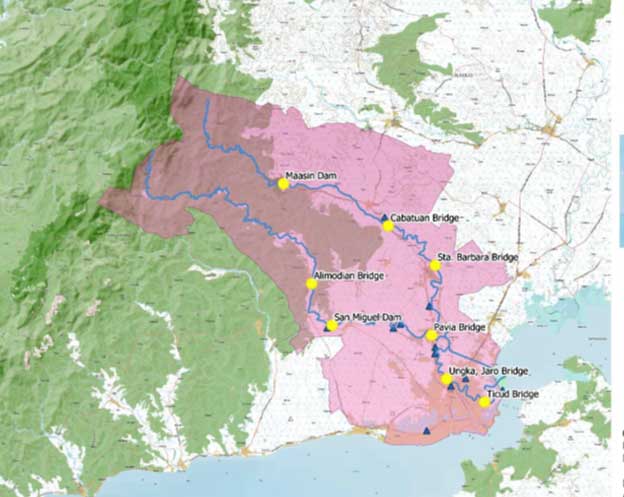
World Wildlife Fund (WWF)-Philippines has started a 3-year project that aims to gain a deeper understanding of Iloilo’s water resources and supply in order to achieve a sustainable water future for over 700,000 people in Iloilo City and its surrounding municipalities.
The objectives of the Tigum-Aganan Watershed project include an in depth study of the water system of the Tigum and Aganan rivers, an assessment of the current water supply and demand situation including projections into the future, and flood simulations for the areas covered by the rivers.
“Water is crucial for almost everything in our society and a growing city like Iloilo needs to have a better and deeper understanding of the water system that supplies them,” Paolo Pagaduan, WWF-Philippines’ Forest for Water Program Manager, said.
“The watershed covers a total of 602 square kilometers, which is almost as big as the entire Metro Manila, and provides water for the residents of 12 municipalities as well as agriculture and irrigation,” he added.
The Tigum-Aganan watershed is bound by the Tigum and Aganan rivers, and is the main water source of Iloilo City. Unfortunately, the city is facing several problems such as poor water quality, lack of sanitation, water contamination, shortages, as well as flooding.
The water situation in Iloilo City became a major problem back in 2000 when there was a water shortage for three months due to the lack of water flow in Tigum River.
As part of WWF-Philippines’ strategic aim to create a holistic, wide-reaching, and long-lasting impact on nature in the Philippines, the Tigum-Aganan Watershed Project is one of the projects they have undertaken to ensure freshwater habitats are well-managed, productive, and resilient. By doing so, these freshwater habitats can support livelihoods, ensure food and water security, and conserve biodiversity.
This assessment is to help secure water for the communities and businesses within the scope of the Tigum-Aganan Watershed by creating more effective plans that take into consideration the effects of climate change. The project will run for 18 months commencing on March 16, 2022.
“We intend to update and harmonize existing data and plans for the watersheds in order to see what’s best to help ensure clean and ample water for the people and for nature, from the mountain ridges to the coast.” Pagaduan said.
In the Philippines, the gap between available water supply and demand continues to widen. Due to water pollution, the country is likely to face a shortage of water.
Climate change has also altered the rainfall and temperature. According to the Philippine Atmospheric, Geophysical and Astronomical Services Administration (PAG-ASA), droughts and floods brought by climate change have negative consequences on water sources and reservoirs all around the country.
The results that will be presented by this study will be the primary basis in developing a comprehensive Action Plan for the watershed’s conservation and management, and will also be the basis for the next step of this project. The anticipated next phase is the implementation of the Action Plan which will take at least 3 additional years to carry out after the end of this assessment.
Apart from the Tigum-Aganan Watershed project, WWF-Philippines has previously worked with Coca-Cola Foundation Philippines on watershed management through its work in Ipo Watershed in Bulacan, Sta. Rosa Watershed in Laguna, and Abuan Watershed in Isabela.
This project is done in partnership with Coca-Cola Foundation Philippines (CCFPI).


















